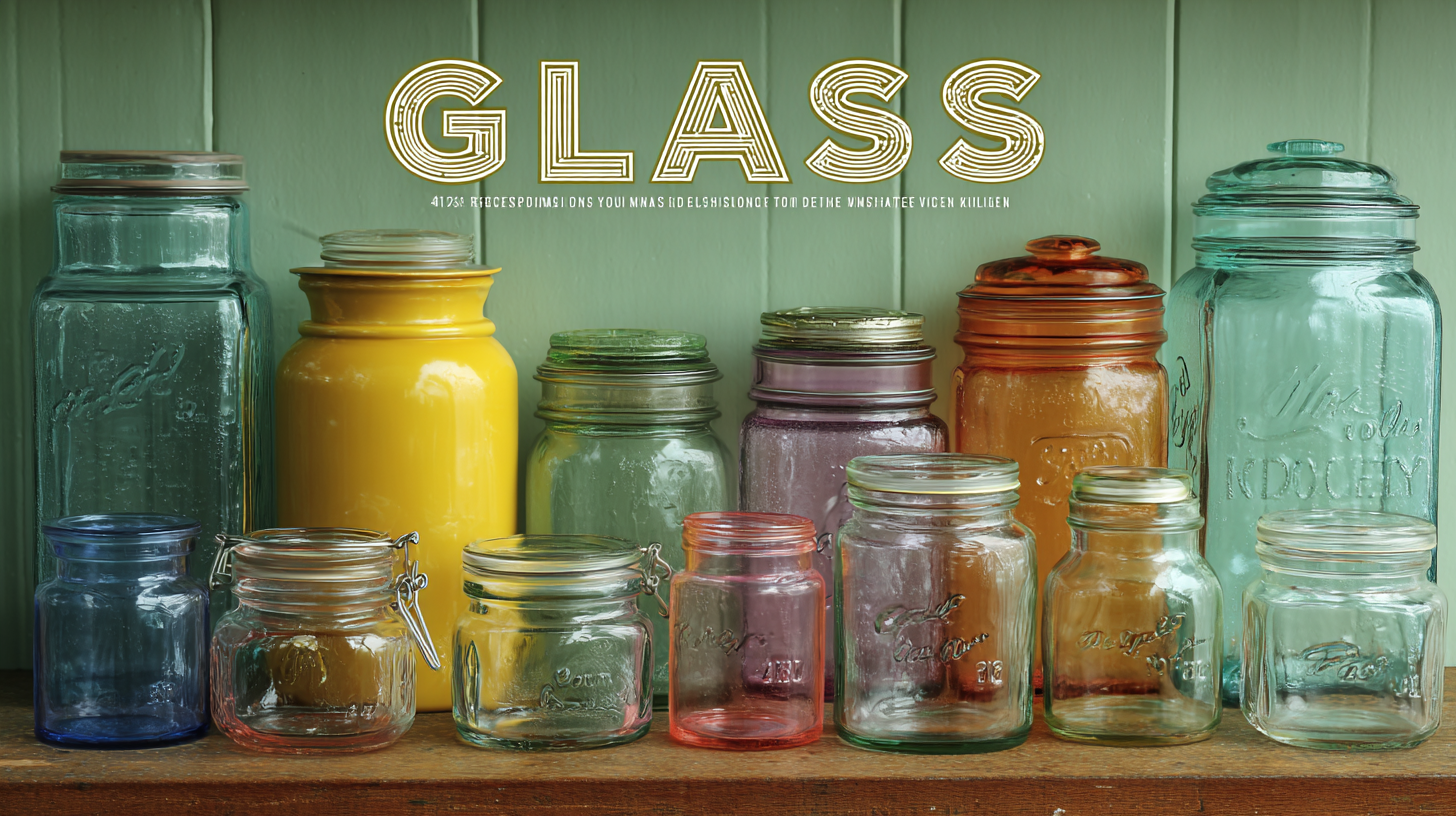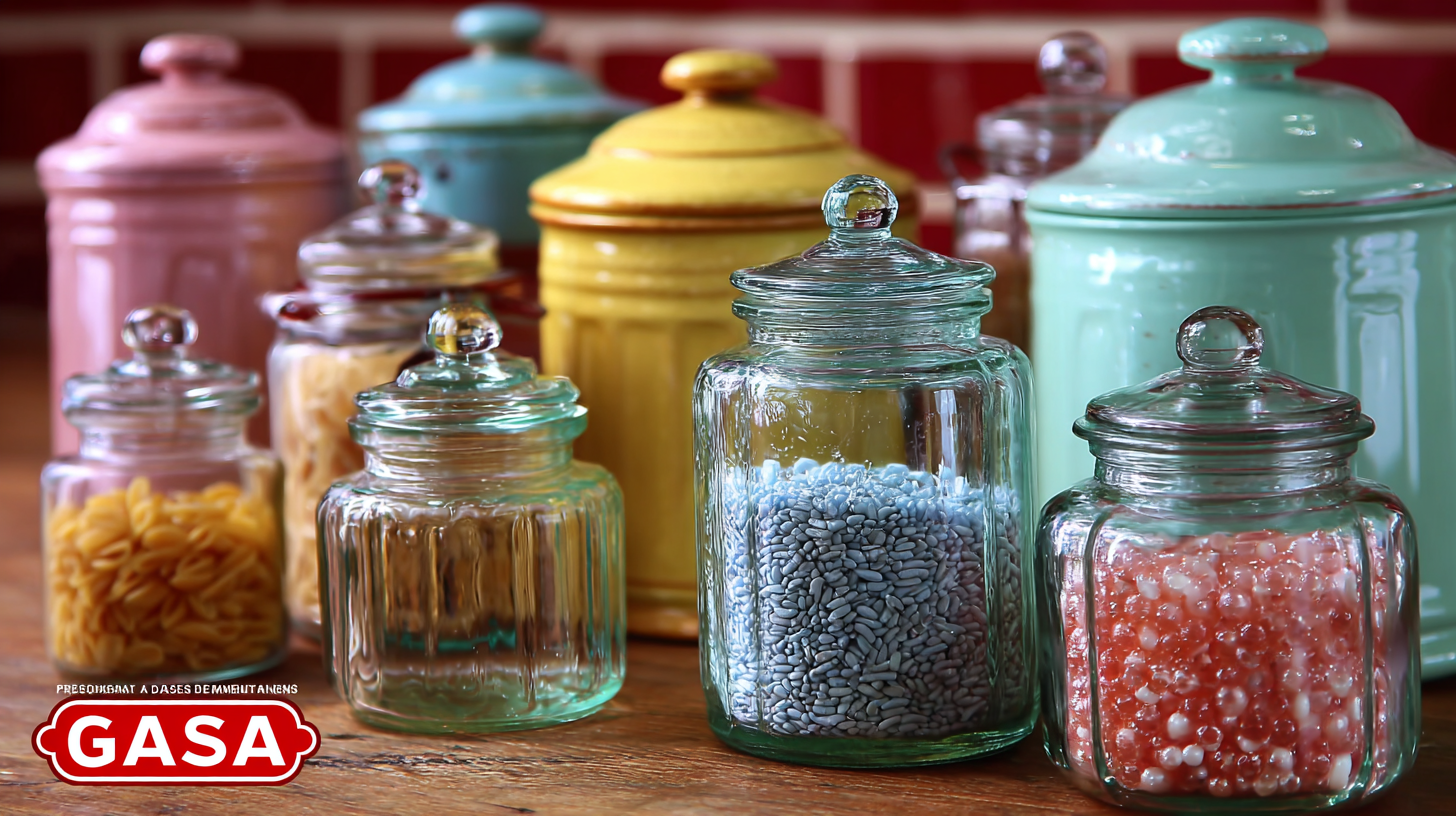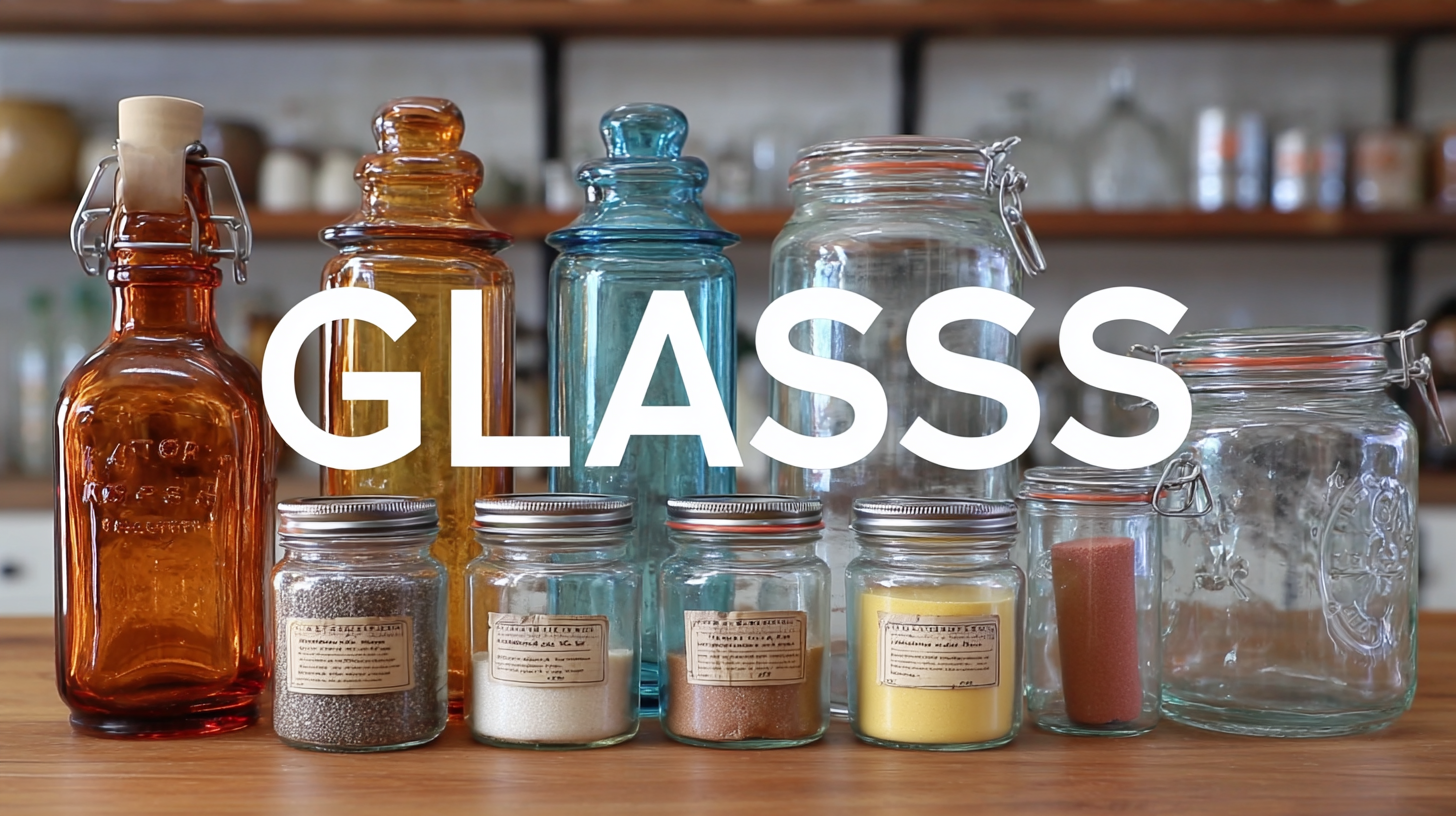Welcome to this website!

In today's modern kitchen, the choice of storage solutions plays a crucial role in food preservation and organization. Among the myriad of options available, Glass Containers have emerged as a preferred choice due to their durability, safety, and environmental benefits. According to a recent industry report by MarketsandMarkets, the glass container market is projected to reach $9.2 billion by 2026, growing at a CAGR of 4.5% from 2021. This growth is driven by increasing consumer awareness regarding sustainability and health, as glass does not leach harmful chemicals into food, unlike some plastic alternatives. Additionally, the versatility of glass containers makes them ideal for various uses, from meal prep to leftovers storage. In this blog, we will explore the specifications and usage methods of the best glass containers for your kitchen, while also discussing the after-sales service advantages and maintenance costs associated with these essential kitchen tools.

When it comes to selecting high-quality glass containers for kitchen storage, certain key features distinguish the best options from the rest. Durable construction, such as borosilicate glass, ensures that these containers can withstand temperature changes without cracking. Moreover, airtight seals are crucial for preserving freshness and preventing leaks, making them ideal for both refrigerating leftovers and packing lunch. Recent testing has shown that the best glass containers maintain the taste and texture of stored food far better than their plastic counterparts.
In a recent review of food storage containers, extensive tests indicated that glass options are more eco-friendly and durable, striking a perfect balance between functionality and sustainability. Moreover, their resistance to staining and odors reinforces their appeal in a kitchen environment. Analysts emphasize that as consumers increasingly lean towards reducing plastic use, the demand for high-quality glass containers is skyrocketing. This shift not only reflects a desire for better food preservation but also highlights an emerging commitment to healthier eating habits and environmental responsibility in culinary practices.
When it comes to kitchen storage, glass containers are rapidly gaining popularity over their plastic counterparts. According to a report by the Environmental Protection Agency, about 2.4 million tons of plastic containers and packaging were generated in 2021, contributing significantly to environmental concerns. On the other hand, glass containers are durable, recyclable, and non-toxic, making them a safer choice for food storage. Research indicates that glass does not leach harmful chemicals into food, unlike certain plastics, which can release substances like BPA and phthalates during use.
Tip: Opt for borosilicate glass containers for food storage. They are heat-resistant and less prone to breaking compared to regular glass, making them ideal for cooking and reheating meals directly in the oven.
Furthermore, glass containers can enhance food preservation. A study published in the Journal of Food Science showed that glass containers maintain food freshness 30% longer than plastic. This is because glass is impermeable, preventing air and moisture from spoiling your leftovers. As a result, you can reduce food waste while keeping your meals delicious and nutritious.
Tip: Use airtight glass containers to maximize freshness. They are perfect for bulk items like grains and spices, helping to retain flavor and nutritional quality over time.

When it comes to maintaining glass containers in your kitchen, establishing a regular cleaning routine is essential. Start by rinsing your glass jars and dishes with warm water immediately after use to prevent food residues from hardening. For stubborn stains or odors, a mixture of baking soda and vinegar can work wonders. Simply apply the mixture, let it sit for a few minutes, and then scrub gently with a non-abrasive sponge. This method not only cleans but also deodorizes your containers effectively without the need for harsh chemicals.
Proper storage of your glass containers is another vital aspect of their maintenance. Always ensure that they are completely dry before stacking or placing them together, as moisture can lead to mold and unpleasant smells. Store your glass containers in a cool, dry environment, and avoid sudden temperature changes, which can cause breakage. Moreover, using lids that fit snugly will prevent dust buildup and keep your food items fresh longer. By following these best practices, you can extend the lifespan of your glass containers while ensuring they remain safe and hygienic for food storage.
This chart illustrates the various usage methods and maintenance practices for glass containers in the kitchen, highlighting their importance for longevity and health safety.
Glass containers have gained prominence in meal prep and storage due to their versatility and safety compared to plastic alternatives. According to a report by Research and Markets, the global glass food storage container market is projected to reach $1.8 billion by 2024, with consumers increasingly opting for sustainable and non-toxic options. This trend reflects a growing awareness of health and environmental concerns associated with plastic usage.

Innovative usage ideas for glass containers extend beyond traditional storage methods. They can be utilized for batch cooking, where ingredients are prepped and stored in individual containers, ensuring ready-to-eat meals throughout the week. A study published in the Journal of Nutrition found that meal prepping can lead to better dietary choices, as individuals are less likely to resort to unhealthy convenience foods. Moreover, glass containers are microwave-safe, making them ideal for reheating meals directly without transferring them into another dish.
Additionally, glass containers can function as aesthetically pleasing serving dishes. By layering colorful ingredients, such as salads or grain bowls, they not only enhance presentation but also encourage mindful eating. Research from the International Journal of Behavioral Nutrition and Physical Activity highlights that visually appealing meals can increase the likelihood of healthier eating habits. Thus, incorporating glass containers into your kitchen can streamline meal prep while promoting better food choices and reducing waste.
When using glass containers in the oven and microwave, safety is paramount. According to a 2022 report by the Glass Packaging Institute, glass containers are not only non-toxic but can also withstand high temperatures, making them a suitable choice for both cooking methods. However, it is crucial to ensure that the glass is specifically labeled as oven-safe or microwave-safe. Ordinary glass may shatter under extreme heat fluctuations, which can lead to dangerous kitchen accidents.
To minimize risks while using glass containers, opt for borosilicate glass, which is known for its thermal resistance. A study published in the Journal of Food Protection indicates that borosilicate glass can withstand temperature differences of up to 100 degrees Celsius without breaking. Additionally, avoid sudden temperature changes, such as placing a hot glass container directly into cold water. Following these guidelines not only helps in maintaining your kitchen's safety but also enhances the longevity of your glassware.
